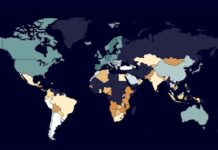
By the BF Staff
From the May/June 2016 Issue
BF: The Cyber Innovation Center (CIC) has received funding from the Dept. of Homeland Security and major Defense contractors. Are they asking for specific technologies?
CS: The various programs we have had funded were for federal customer agencies. In the case where funds came to us from defense contractors, the prime DoD contractor provided a subcontract to the Cyber Innovation Center for the purpose of facilitating contracting arrangements. We continue to provide support to federal agencies for technology and research development. The funding is not specific to product development, though. We provide significant support to Homeland Security in the area of academic outreach, curriculum and professional development, and a broad range of related support to creating the cyber workforce across all of the educational levels.
BF: The CIC is anchoring a 3,000-acre National Cyber Research Park in Bossier City, LA. Will additional research facilities be developed at the Park?
CS: The Cyber Innovation Center was established for a variety of complementary outcomes. The advancement of technology-transfer from basic research through commercialization to include startup business will remain integral to our existence. Creating employment opportunities in our geographic region in knowledge-based business sectors, primarily cyber and nuclear, is fundamental to the research park development. Of significant importance to the research park’s establishment criteria was the ability to reverse the outflow of technical talent from the region and to provide a growth area for technical employment opportunity.
Given the nature of cyber and nuclear research, unique facility requirements exist to accommodate such research areas. The expectation for the park is continued growth within the zoning district overlay. The current success of the park combined with expected future growth around the Air Force Global Strike Command is encouraging.
LAST CHANCEOn Earth Day, the United Nations held a signing ceremony for the Paris climate accord, an agreement reached by 175 nations in December that aims to curb the relentless rise of man-made carbon emissions and keep average global temperatures from increasing more than 3.6 degrees Fahrenheit, the consensus tipping point for irreversible global warming. Unfortunately, the voluntary carbon emissions limits enshrined at the UN appear to be little more than a high profile bit of diplomatic buck-passing. Under the Paris agreement, China, the world’s biggest carbon polluter, is allowed to increase its carbon emissions for another 15 years. The PRC is building more than 200 new coal-fired power plants that will generate 190-gigawatts of electricity; China has plans for an additional 200 coal-burning utilities. As this is being written, there are at least 1,200 new coal-fired plants on the drawing boards worldwide, according to IHS Energy. The day after the Earth Day hoopla at the UN, the World Bank and the International Monetary Fund—institutions not normally associated with setting policy on energy-related issues—reminded everyone that the Paris climate accord will have little or no impact unless it’s backed by a global tax on carbon. The leaders of the World Bank and the IMF bluntly declared it’ll be impossible to avoid the worst effects of climate change unless all fossil-fuel polluters are forced to pay for the carbon dioxide they emit. The World Bank has created a Carbon Finance Unit to give financial and technical assistance to countries that are creating a system to put a price on carbon, either through a straight tax on fossil fuels or as a “cap-and-trade” system that sets limits on overall carbon emissions and then allows companies to buy and sell emission allotments sold by the government. But what may be the world’s best, last chance to avoid the calamity of climate change is rising on a site in the South of France. Its name is ITER, short for International Thermonuclear Experimental Reactor. ITER is a $16-billion effort—backed by the United States, the European Union, India, China, Russia, Japan and South Korea (the EU is paying 45 percent of the cost)—that aims to build the world’s first full-scale power plant generating electricity from nuclear fusion, the kind of energy thus far only continuously generated on the Sun. ITER will become the world’s largest magnetic confinement plasma physics experiment, a fusion reactor designed to produce 500 megawatts of output power for several seconds while needing only 50 megawatts to operate. Thus far, smaller-scale fusion reactors have not been able to produce more energy than the amount used to initiate the chain reaction. A self-sustaining fusion reaction promises an unlimited source of pollution-free energy for everyone on Earth. Construction on ITER started in 2013 and originally was scheduled for completion by 2019, but reports indicate that the project is at least five years behind schedule and full-scale experiments may happen before 2027. |
BF: Is the CIC working with Louisiana universities to develop curricula to support cyber research? What types of skills are essential to cyber security work?
CS: Louisiana Tech University offers the nation’s first Cyber Engineering bachelor’s degree program. This program was developed in partnership with Air Force Research Labs as a means to address the growing challenges in cyberspace and cybersecurity. What makes this program unique is its integrated approach—computer science and electrical engineering with a national security underpinning. The CIC partners with Louisiana Tech University in advancing research by connecting federal agencies with investigators who are conducting a variety of relevant “cyber research.” Louisiana Tech University is a Center of Academic Excellence for the National Security Agency in both Academic Excellence and in Research.
In addition to cyber engineering and information assurance, relevant research topics include cyber policy and strategy, electronics shielding, data analytics and multi-sensor data fusion, micro- and nanotechnology, underground infrastructure, and advanced communications. Skills critical to cybersecurity range from an understanding of software and hardware, along with networking and programming, and [an understanding] of the problem in the context of policy, law and ethics.
BF: Loyola University New Orleans is offering specialization in Cyber Forensics. Do you anticipate the emergence of other industry sectors related to cyber innovation?
CS: Cyber encompasses a broad spectrum, similar to that of the medical field. There are many areas where specialization can occur. Cyber Forensics is seeing tremendous growth, and I foresee opportunities in related industry sectors.
BF: Does cyber innovation and cyber security have the potential to become a major new growth sector in Louisiana in terms of job creation or is it a highly specialized niche?
CS: Cyber security and cyber innovation [can] become a major growth sector in Louisiana. The CIC took a long and disciplined view of this business sector early. This approach has given the region a significant head start in creating what is still the only [cyber-] focused workforce development program in the country. This initiative starts with students in the formative years of education and [develops them as] as career cyber experts. Our [unique] ability to positively respond to the largest part of the nation’s cyber problem (workforce availability) creates a gravitational pull from industry to our community.
Cyber touches every aspect of how we live, work and play in a Western civilization and it’s one of the fast-growing industries in the world. Last year, one report stated there were currently 380,000 unfilled cybersecurity jobs available and estimates of over 1 million by 2020 in the U.S. alone. Louisiana has a competitive advantage, already is being demonstrated in Northwest Louisiana.
BF: What kind of support are you getting from state agencies to develop the National Cyber Research Park?
CS: The State of Louisiana has been a strong supporter for the CIC and the National Cyber Research Park since the beginning. We work very closely with Louisiana Economic Development and the governor to ensure Louisiana is an attractive and competitive landing spot.
The CIC has had overwhelming support from the local governments of Bossier City and Bossier Parish. In 2007, these two entities invested a total of $50 million in the creation of the CIC and National Cyber Research Park. In following years, Bossier has continued to provide the leadership necessary to grow an anchor of innovation in Northwest Louisiana.
The Louisiana National Guard has teamed with the CIC to advance the Cyber Protection Team, which will include Texas and Mississippi Guards as well. These units will support the U.S. Cyber Command, headquartered in Maryland.
BF: What are the most critical cybersecurity threats that need to be addressed in the near term?
CS: Cybersecurity threats are multi-faceted and complex. For example, we have an aging infrastructure that leaves our power and utility grids vulnerable to cyber attacks which, if compromised, would have devastating impacts on our economy. On a consumer level, more and more aspects of our daily lives depend on cyberspace, thus creating great dependencies and ever-growing vulnerabilities. From a global competitiveness and national security issue, we are not producing enough students with the necessary skills to successfully defend our nation’s intellectual property and cyber networks. And militarily, cyberspace is the new war-fighting domain. Just like land, air, sea and space, dominance in cyberspace will be a driving force in the military and economic balance of geopolitical power.
















![[VIDEO] Get More for Your Business in Ardmore. Oklahoma](https://businessfacilities.com/wp-content/uploads/2024/02/maxresdefault-324x160.jpg)
